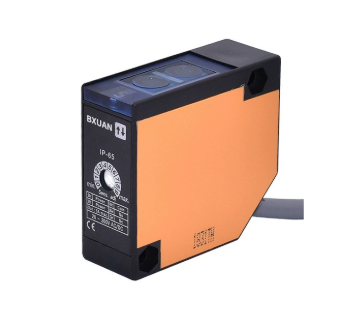Understanding Reflector Panels and Reflective Tape
What Is a Reflector Panel?
Reflector panels are crafted to effectively redirect light and are extensively utilized in safety and industrial contexts. These panels, often glossy or curved, leverage materials like aluminum layers and specialized coatings to boost light return, serving purposes such as enhancing road signage visibility or improving vehicle safety. The incorporation of these materials ensures they efficiently reflect light, thereby maximizing their visibility and utility in crucial applications like traffic signs.
What Is Reflective Tape?
Reflective tape is a multifunctional adhesive material celebrated for its reflective qualities and adaptability across numerous settings. Supplied in various colors and typically available in rolls, it can be applied on multiple surfaces to enhance visibility. Its applications range from denoting hazards in factories to enhancing clothing for safety compliance. This makes reflective tape an essential element in both industrial and personal safety practices.
Retroreflective vs. Standard Reflective: Core Definitions
Understanding the differences between retroreflective and standard reflective materials is key to selecting the right safety solution. Retroreflective materials are designed to return light directly to its source, significantly improving visibility in low-light settings. By contrast, standard reflective materials disperse light in various directions, making them less effective for long-range visibility. Knowing these distinctions is crucial when choosing materials tailored for specific visibility and safety enhancements.
How They Work: Light Reflection Mechanisms
Retroreflective Properties in Panels (Directional Light Return)
Retroreflective panels are equipped with either microscopic glass beads or prisms that enable them to return light directly back to its source. This unique property is essential for safety applications, particularly for enhancing the visibility of objects at long distances, such as road signs and vehicle markings. According to research, implementing retroreflective markers can significantly reduce accidents in low-light conditions. This directional light return ensures that the reflected light is visible even from a distance, improving safety in a variety of scenarios.
Reflective Tape’s Scattered Light Dispersion
Reflective tape operates on a principle of scattering light across a wider area, making it exceptionally useful for close-range visibility applications. This feature is crucial for marking hazards or paths in environments where people are likely to be in close proximity to the reflective surface, such as warehouses or industrial settings. The efficiency of reflective tape varies depending on the angle and distance of the light source. This scattered light dispersion ensures that reflective surfaces are visible even when viewed from sharp angles, enhancing safety where direct illumination is sparse.
Glass Bead vs. Prismatic Surface Technologies
When it comes to the technologies behind reflective materials, glass bead and prismatic surfaces offer distinct advantages. Glass bead technology involves embedding minuscule glass spheres within the reflective surface to optimize light return. Conversely, prismatic surface technology employs tiny facets to redirect light more efficiently than traditional glass beads. The choice between these two technologies has direct implications on performance and durability, as well as maintenance considerations. While glass beads are typically more affordable and flexible, prismatic technologies often provide superior brightness and long-term resilience.
Material Composition and Durability
Glass Bead Technology in Reflective Tape
Glass bead technology significantly enhances the durability and longevity of reflective tape, making it particularly suitable for outdoor applications. The transparent beads embedded in the tape help maintain brightness, even after long-term exposure to varying weather conditions. This resilience is crucial for safety applications requiring consistent visibility. Statistical evidence supports that reflective tapes using glass beads frequently outlast their non-beaded counterparts. This extended durability makes them a reliable choice for ensuring safety in both industrial and vehicular contexts.
Prismatic Surfaces in Reflector Panels
Prismatic surfaces provide remarkable light return efficiency, especially when compared to traditional flat materials used in reflector panels. This technology enables the creation of thinner panels without sacrificing reflectivity, which is ideal for space-constrained designs. Research indicates that prismatic reflector panels can enhance visibility by up to 50% over standard panels. This dramatic improvement not only enhances safety but also allows for greater flexibility in design and installation within limited spaces or compact structures.
Weather Resistance and Longevity Comparison
Both reflective tape and reflector panels are designed to withstand various weather conditions, but their material compositions contribute differently to their longevity. Studies reveal that while reflective tape might degrade quicker under certain environmental factors, reflector panels often have a longer lifespan. It's crucial to select the appropriate material based on specific applications and anticipated exposure conditions. This careful selection ensures that the intended safety solutions remain effective over time and meet the demands of challenging environments.
Applications in Safety and Industry
High-Visibility Workwear: ANSI 107 Compliance
High-visibility workwear is essential for ensuring worker safety, and reflector panels and reflective tape play a vital role in these garments. Compliance with the ANSI 107 standards is a crucial aspect, as it ensures that the workwear can provide sufficient visibility under various lighting conditions. According to safety reports, the implementation of ANSI-compliant reflective materials has been shown to significantly reduce workplace accidents. This compliance not only confirms the effectiveness of the visibility features but also enhances overall workplace safety, providing peace of mind for both employers and employees.
Automotive and Traffic Safety Use Cases
Reflector panels have a significant impact on road safety, especially in the visibility of traffic signs and vehicle markings. Reflective tape, on the other hand, is extensively utilized on emergency vehicles to enhance their visibility, particularly at night. Road safety organizations have documented that the use of reflective materials can essentially halve the risk of accidents during nighttime driving. This statistic emphasizes the importance of incorporating high-functioning reflective solutions in traffic and automotive safety applications to ensure safer roads for everyone.
Industrial vs. Everyday Scenarios
In industrial settings, reflector panels are widely used due to their enhanced safety features and durability, making them suitable for demanding environments. Reflective tape, conversely, finds more frequent application in everyday scenarios like home safety signage and various personal items. Understanding the context in which these reflective solutions are used is crucial for selecting the right product. Whether the need is for industrial-grade durability or for more common household safety items, choosing the appropriate reflective solution ensures the best safety outcomes in both industrial and personal settings.
Key Differences at a Glance
Light Efficiency in Low-Visibility Environments
Reflector panels generally offer superior light efficiency in low-visibility situations due to their unique design. Unlike reflective tape, which is effective for localized visibility, reflector panels can cover extended distances and angles. The efficiency of reflector panels stems from their surface texture and the angle of incidence, which are crucial factors in maximizing light reflectivity. Reflective tape, while useful, does not provide the same long-distance efficacy and is more suitable for close-range applications.
Cost, Maintenance, and Installation Flexibility
Reflective tape is typically more cost-effective and easier to install than reflector panels, making it a popular choice for temporary solutions. Its affordability and straightforward application process are ideal for short-term projects needing quick visibility enhancements. However, maintenance requirements between reflective tape and panels differ significantly. Reflector panels often demand less frequent inspections and replacements compared to tape, which can deteriorate faster in harsh environments. Furthermore, considering installation flexibility is crucial for project planning and budgeting, as tape offers more adaptability to diverse surfaces and shapes.
Choosing Based on Regulatory Needs
Different applications may require adherence to specific regulatory standards concerning visibility materials. Reflector panels are sometimes mandated for certain signage applications due to their permanence and durability. In contrast, reflective tape can be employed in various personal safety gear and temporary setups without stringent compliance requirements. Therefore, evaluating regulatory needs is essential for making informed decisions about which reflective materials to use, ensuring adherence to industry standards while balancing functionality and cost-effectiveness.
FAQs
What are reflector panels made of? Reflector panels are typically made with materials such as aluminum layers and specialized coatings to enhance light return and visibility.
How does reflective tape improve safety? Reflective tape enhances safety by scattering light across a wide area, thus improving close-range visibility in both industrial and personal applications.
What is retroreflective technology? Retroreflective technology involves materials that return light to its source, significantly improving visibility in low-light environments.
What is the difference between glass bead and prismatic technologies? Glass bead technology uses minuscule glass spheres for light return, whereas prismatic technology employs tiny facets to direct light more efficiently and provide enhanced brightness.
How does the longevity of reflective tape compare to that of reflector panels? While reflective tape may degrade quicker in some environmental conditions, reflector panels generally have a longer lifespan due to their material composition.

